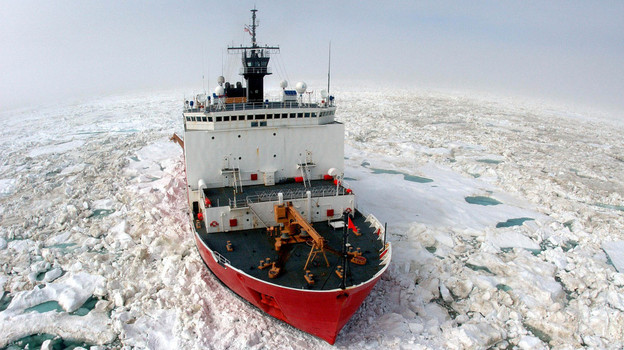
From Martin Kaste, NPR: Seattle is the home of the U.S. Coast Guard’s entire fleet of polar-class icebreakers. Both of them.
Capt. George Pellissier commands both the Polar Sea and the Polar Star. He has spent much of his career on these ships, which were built in Seattle in the 1970s.
"The two ships are almost identical, they were built a year apart. Our design is to break 6 feet of ice continuously, and we can break up to 21 feet of ice," Pellissier says, referring to the thick "pressure ridges" that can form between sheets of ice in the waters north of Alaska, and which can trap and even crush less sturdy vessels.
He takes pride in the fact that these "polars," as they’re called, are still among the most capable icebreakers out there — not counting the Russians’ big, nuclear-powered icebreakers.
But Pellissier admits that if an ice-breaking emergency broke out, America wouldn’t have much to offer because, right now, neither polar icebreaker is functional. . . .
Lisa Murkowski, the Republican senator from Alaska, is a big believer in establishing a more persistent U.S. presence in the Beaufort and Chukchi seas, north of her state.
"We are an Arctic nation. And as such, we have responsibilities and obligations in the Arctic," she says. . . .
"There are a lot of folks that are looking with great interest at the level of activity by the Chinese up in the Beaufort and Chukchi. And they’re wondering, ‘What’s going on up there?’ Because we don’t think that they’re doing any sightseeing," she says. (photo: Prentice Danner/AP)
Image: ap%208%2019%2011%20U.S.%20Coast%20Guard%20Cutter%20Healy.jpg
